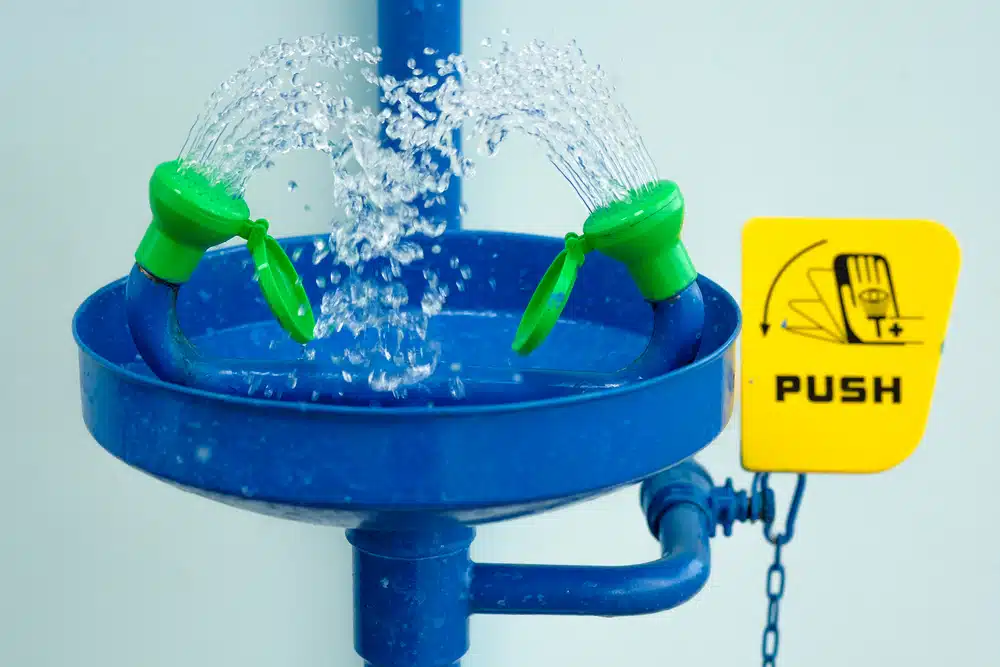For any work environment that utilizes hazardous chemicals, safety precautions and first aid equipment, such as an eye washing station, are imperative. If an accident ever does occur and a chemical gets into your eyes, those first few seconds are crucial for minimizing any damage it may cause to your vision. In fact, according to the Canadian Centre for Occupation Health and Safety, you should receive first aid attention within the first 10 to 15 seconds. That’s why any dangerous chemicals that are present in the workplace must contain an accessible designated eye flushing station within close reach.
If you or someone you love is working with chemicals, read on to learn about the necessary eye washing procedures that can help save your sight.
Contents
Know the Chemicals that are Present
The first step in minimizing any potential damage to your eyes is to understand the hazardous chemical that you’ve encountered. So if you’re working with chemicals or are in an environment where they are being used on a regular basis, it’s important to know what kind of chemicals you’re dealing with.
Any corrosive materials are the most dangerous and always require an eyewash facility within approximately 10-second walking distance. You should consult with the CCOHS’ website under Hazard Communication Standard to learn what rules your workplace must comply with, and also about the first aid information and method of treatment directed for each chemical.
Eye Washing Stations
There are four types of eye washing stations available, but two that are the most commonly used – plumbed and self-contained. Both of these adhere to the CCOHS standards and requirements. When washing out your eyes, you need to be able to flush them with water for at least 15 minutes continuously, which these are designed to do.
Flushing Your Eyes
If a chemical has entered your eyes, you need to go immediately to the eye washing station. Since vision can be obstructed, you may need to call out for someone to help guide you.
Place your eyes directly in the stream of the flushing fluid and hold your eyes open with your fingers. With a station that is up to CCOHS code, the fluid should stay on once pressed to free up your hands.
Roll Eyes and Continue to Flush
It’s imperative that you continue to hold your eyes open and gently roll them from left to right, as well as up and down to allow all areas to be rinsed. Keep doing this for at least 15 minutes.
Take Out Contacts During Flushing
If you have contact lenses in your eyes, ignore them initially so that you don’t waste any time getting your eyes to the washing station and flushed. Take them out while flushing.
Seek Medical Attention
Once your eyes have been sufficiently flushed, it’s important that you seek medical attention from a doctor so they can assess your eyes and vision thoroughly and carry out any treatment that may be necessary.
Keeping your eyes and vision safe is a top priority, especially when dealing with chemicals. And if a chemical ever does enter your eyes, knowing how to flush them properly can end up saving your sight.
